#Lower Jurassic fossil
Explore tagged Tumblr posts
Photo

Rare Aegasteroceras Ammonite Fossil Lower Jurassic Scunthorpe UK | Denotatus Subzone Frodingham Ironstone Genuine Specimen
This listing features a rare Aegasteroceras ammonite fossil, originating from the historically significant Conesby Quarry, Scunthorpe, in North Lincolnshire, England. It is preserved within the Frodingham Ironstone Formation and dates to the Lower Jurassic, specifically the Obtusum Zone and Denotatus Subzone of the Lower Lias Group.
This genuine specimen is shown in the listing photographs and is the exact item you will receive. It has been carefully selected for its rarity, scientific value, and visual appeal.
Geological & Palaeontological Details:
Genus: Aegasteroceras
Fossil Type: Ammonite
Family: Arietitidae (tentative placement)
Superfamily: Psiloceratoidea
Order: Ammonitida
Geological Period: Jurassic
Epoch: Early Jurassic
Stage: Lower Sinemurian
Biozone: Obtusum Zone, Denotatus Subzone
Formation: Frodingham Ironstone Formation
Location: Conesby Quarry, Scunthorpe, North Lincolnshire, England
Depositional Environment: Shallow epicontinental sea with iron-rich marine sediments. The Frodingham Ironstone represents a transgressive systems tract within the Cleveland Basin, known for its rich ironstone and marine fossil content.
Morphology & Features:
Aegasteroceras is notable for its evolute coiling, strong radial ribbing, and robust shell profile
It often exhibits deep constrictions and a well-defined umbilicus
This specimen shows classic ribbing and coiling, allowing for secure identification
Preserved in an iron-rich matrix typical of the Scunthorpe ironstone beds, adding a distinctive aesthetic and scientific interest
Notability: Fossils of Aegasteroceras are exceptionally rare, especially from Scunthorpe's Denotatus Subzone, making this a sought-after collector’s item and an important piece for biostratigraphic correlation. The genus was originally described by Spath (1925), a pioneer in Lower Jurassic ammonite taxonomy.
Additional Details:
All our fossils are 100% genuine specimens
Supplied with a Certificate of Authenticity
Photo shows the exact fossil for sale
Scale cube = 1cm – please refer to listing images for full size reference
A remarkable fossil for display, research, or education. This ammonite captures a window into the iron-rich seas of Early Jurassic Britain and represents a rare piece of paleontological heritage from a historically important UK locality.
#Aegasteroceras#ammonite fossil#rare ammonite#Jurassic ammonite#Lower Jurassic fossil#Scunthorpe fossil#Frodingham Ironstone#Denotatus Subzone#Obtusum Zone#Conesby Quarry#UK ammonites#British fossil#ancient cephalopod#fossil collector#fossil with certificate#ammonite Scunthorpe#Lincolnshire fossils#Lower Lias fossil#authentic fossil ammonite#geological fossil specimen
1 note
·
View note
Text
Round 3 - Actinopterygii - Elopiformes


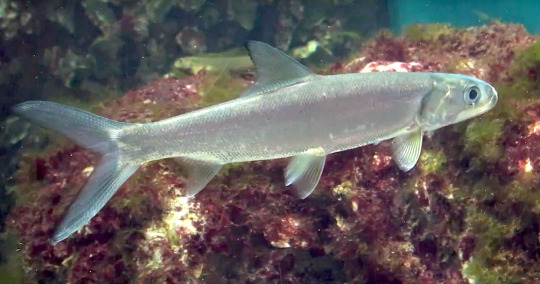

(Sources - 1, 2, 3, 4)
Order: Elopiformes
Common Name: “ladyfish” and “tarpon”
Families: 2 - Elopidae (“ladyfish”) and Megalopidae (“tarpon”)
Anatomy: fusiform (tapering spindle shaped), silvery body; large eyes with adipose eyelids; broad mouths with prominent lower jaws; swim bladder can be used as an accessory respiratory organ; eel-like leptocephalic (flat and transparent) larvae (image 4)
Diet: smaller fish and crustaceans; stage-one larvae absorb nutrients from surrounding seawater
Habitat/Range: coastal throughout tropical and subtropical regions, occasionally venturing into temperate waters; spawns at sea but can be found in brackish and freshwater
Evolved in: Elopiformes in the Middle Jurassic; the families Elopidae and Megalopidae in the Early Cretaceous
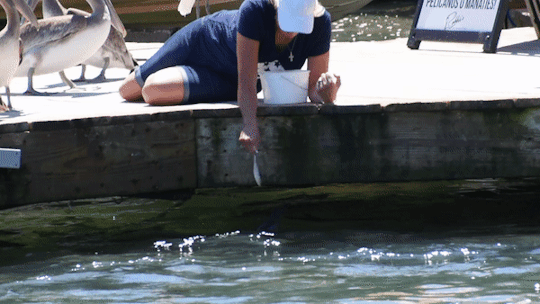
Propaganda under the cut:
Elopiformes are known from many widespread fossil species, but today the order contains only two genera and nine species
Most Ladyfish have not been evaluated for conservation status, but as they use estuarine areas and hypersaline lagoons; changes in the quality of these habitats may affect their population dynamics, and they may be adversely affected by development and urbanization.
The habitats of Tarpon vary between their developmental stages. Stage one, or the leptocephalus stage, is completed after 20–30 days. Stage-one larvae are usually found in clear, warm, oceanic waters, relatively close to the surface, where they feed by absorbing nutrients from the seawater. The leptocephalus shrinks as it develops into a larva; the most shrunken larva, stage two, develops by day 70. This is due to a negative growth phase followed by a sluggish growth phase. Stage-two and -three larvae are found in salt marshes, tidal pools, creeks, and rivers, where they feed on zooplankton, insects, and eventually small fish. These habitats are characteristically warm, shallow, dark bodies of water with sandy mud bottoms. By day 70, the juvenile growth phase (stage three) begins, and the fish grows rapidly until sexual maturity. Tarpon commonly swim upriver into fresh water. As they progress from the juvenile stage to adulthood, they often return to the ocean's open waters, though may remain in freshwater habitats. Adults are strictly carnivorous and feed on midwater prey, hunting nocturnally and swallowing their food whole.
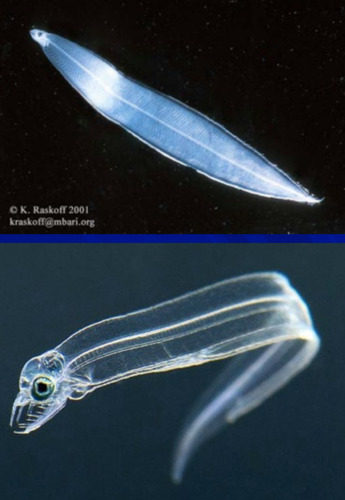
(source)
Young tarpons may ride stormwater into remote, semi-landlocked ponds, where they will stay from one to three years. These ponds, some of which are brackish or freshwater, often become so low in oxygen that Tarpons (and Snooks) are the only fish able to survive in these environments, due to their swim bladders allowing them to breath air from the surface. The juveniles face fewer competitors and predators in these environments, but need to breathe atmospheric oxygen to survive. These fish are obligate air breathers and will die without sufficient access to the surface.
Tarpon can grow to about 1.2–2.4 m (4-8 ft) long and weigh 27–127 kg (60–280 lb). They are considered some of the greatest saltwater game fishes, prized not only because of their large size but also because of their fight and spectacular leaping ability. Numerous tournaments are focused on catching Tarpon, though Tarpon meat is not desirable, so most are released after being caught.
116 notes
·
View notes
Text

Fossilized fish bones of a Chondrosteus acipenseroides from the Charmouth Mudstone Formation in Church Cliff Bay, Lyme Regis, Dorset, England. This Lower Jurassic aged acipenseriform is a distant relative of today's sturgeon and paddlefish and one of the earliest known taxa of this clade. This specimen was acid prepped out a beach nodule.
#fish#fossils#paleontology#palaeontology#paleo#palaeo#chondrosteus#acipenseriformes#chondrosteidae#sturgeon#paddlefish#jurassic#mesozoic#prehistoric#science#paleoblr#コンドロステウス#コンドロステウス科#チョウザメ目#化石#古生物学
94 notes
·
View notes
Text
Lishulong wangi Zhang et al., 2024 (new genus and species)

(Skull of Lishulong wangi, from Zhang et al., 2024)
Meaning of name: Lishulong = Lishu dragon [in Chinese]; wangi = for Wang Zheng-Ju [Chinese fossil hunter]
Age: Early Jurassic (Sinemurian–Toarcian)
Where found: Lufeng Formation, Yunnan, China
How much is known: Partial skull and nine neck vertebrae of one individual.
Notes: Lishulong was an early sauropodomorph. Although many Early Jurassic sauropodomorphs have been named from the Lufeng Formation, Lishulong is the largest one yet found among them, and differs from the others in details of its skull and neck vertebrae. It appears to be closely related to fellow Lufeng sauropodomorph Yunnanosaurus.
Reference: Zhang, Q.-N., L. Jia, T. Wang, Y.-G. Zhang, and H.-L. You. 2024. The largest sauropodomorph skull from the Lower Jurassic Lufeng Formation of China. PeerJ 12: e18629. doi: 10.7717/peerj.18629
103 notes
·
View notes
Text
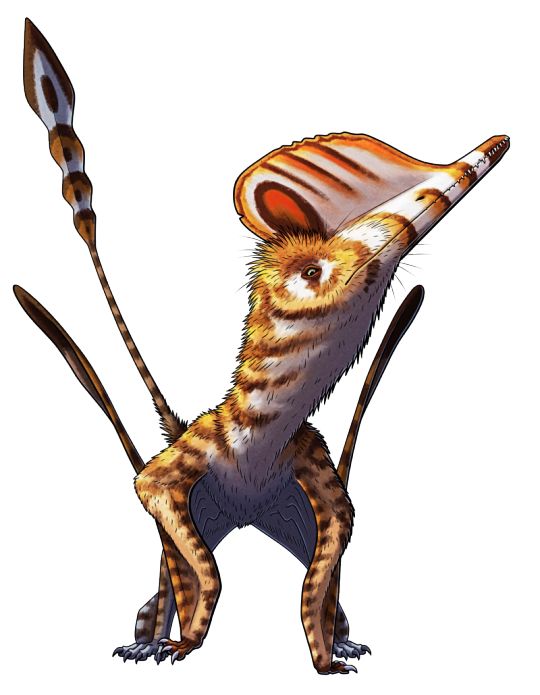

Wukongopterus lii was a pterosaur that lived during the mid-to-late Jurassic, about 164 million years ago, in what is now northeastern China. It was fairly small, with a wingspan of around 70cm (~2'4"), and showed a mixture of anatomical features in-between the long-tailed short-headed 'rhamphorhynchoids' and the short-tailed long-headed pterodactyloids.
Its long jaws were lined with tiny pointed conical teeth, suggesting it was adapted for primarily feeding on insects. It also had a very slight overbite, with the first two pairs of teeth in its upper jaw protruding almost vertically over the end of its lower jaw.
As a fully mature adult it would have had a low bony crest on its head that probably supported a larger keratinous structure – similar to other known wukongopterids – although the exact size and shape is unknown since the one confirmed specimen of Wukongopterus is missing that particular part of its skull. Another fossil nicknamed "Ian" may represent a second individual of this species, showing a different crest arrangement further forward on its snout, so I've made two different versions of today's image to reflect that possibility.
———
NixIllustration.com | Tumblr | Patreon
References:
Cheng, Xin, et al. "New information on the Wukongopteridae (Pterosauria) revealed by a new specimen from the Jurassic of China." PeerJ 4 (2016): e2177. https://doi.org/10.7717/peerj.2177/supp-1
Garland, Nick. “Ian the Wukongopterid.” Pteros, https://www.pteros.com/pterosaurs/ian-the-wukongopterid.html
Wang, Xiaolin, et al. "An unusual long-tailed pterosaur with elongated neck from western Liaoning of China." Anais da Academia Brasileira de Ciências 81 (2009): 793-812. https://doi.org/10.1590/S0001-37652009000400016
Wikipedia contributors. “Wukongopterus.” Wikipedia, 8 Dec. 2023, https://en.wikipedia.org/wiki/Wukongopterus
XuanYu Zhou 周炫宇. Anatomy, Systematics and Paleopathology of Pterosaurs: insights based on new specimens from China. 2023. Hokkaido University, PhD thesis. https://doi.org/10.14943/doctoral.k1560
#science illustration#paleontology#paleoart#palaeoblr#wukongopterus#wukongopteridae#monofenestrata#pterosaur#art
347 notes
·
View notes
Text
Researchers reporting in the journal Current Biology on December 4 have found the earliest-known fossil mosquito in Lower Cretaceous amber from Lebanon. What's more, the well-preserved insects are two males of the same species with piercing mouthparts, suggesting they likely sucked blood. That's noteworthy because, among modern-day mosquitoes, only females are hematophagous, meaning that they use piercing mouthparts to feed on the blood of people and other animals. "Lebanese amber is, to date, the oldest amber with intensive biological inclusions, and it is a very important material as its formation is contemporaneous with the appearance and beginning of radiation of flowering plants, with all what follows of co-evolution between pollinators and flowering plants," says Dany Azar of the Nanjing Institute of Geology and Paleontology at the Chinese Academy of Sciences and the Lebanese University. "Molecular dating suggested that the family Culicidae arose during the Jurassic, but previously the oldest record was mid-Cretaceous," says André Nel of the National Museum of Natural History of Paris (Muséum National d'Histoire Naturelle de Paris). "Here we have one from the early Cretaceous, about 30 million years before." The Culicidae family of arthropods includes more than 3,000 species of mosquitoes. The new findings suggest that male mosquitoes in the past fed on blood as well, according to the researchers. They also help to narrow the "ghost-lineage gap" for mosquitoes, they say.
Continue Reading.
188 notes
·
View notes
Note
Hello!! I don't think I've sent anything here so welcome to DINOSAUR FACT TIME!! The rules are simple, I tell you a dinosaur fact and you tell me a dinosaur fact in return!! (Unless you don't want to, I don't mind)
The fact I offer you today is: Ornitholestes (meaning "bird robber"), is a small, late Jurassic theropod. It was the first theropod discovered in the 1900s and was found by an American Natural History Museum expedition including Paul Miller, Peter C. Kaisen, and Frederic Brewster Loomis in Wyoming. As of current, all we have of the genus is that first partial skeleton with a crushed skull. The only known type species of this dinosaur is O. hermanni. There has been some debate on length and weight but I've done my best to put together numbers for you, so it's come to an estimated length of 2.08 meters (6.82 ft) and a weight of 15 kg (33 lbs). The maxillias in it's upper jaw contained 10 teeth each where the dentary in the lower jaw held 12, it's teeth were short despite its dentary bone reaching to below the middle of it's eye socket!!
I hope you enjoyed dinosaur fact time! :]
hi critter! nice of you to stop by here <3
how fitting of you to give me a dinosaur fact that essentially has the word "bird" on it XD especially considering the common fandom we share and thrive in. this is very interesting though and quite a mystery to unravel. what do you mean we only have a partial skeleton with a crushed skull for this genus? hopefully we can find more of its kind in the near future, mapping out its family tree a bit more! theyre also rather small guys (still bigger than me) and rather light. the teeth are quite curious too, wonder why they evolved to be like that...
well so dinosaur fact time from me [searches thru google] im sure u already know this but feathered dinosaurs are evidenced to exist based on the discovery of feathers of fossilized specimens of the sinosauropteryx in china. some dinosaurs like the microraptor and anchiornis had complex feathers that suggest they may have been capable of gliding or even powered flight. its kinda fascinating to think that the dinos predated feathers and flight than birds.
anyways yeah wanted to end this ask with something relating to birds XD thanks for dinosaur fact time <3
#novem asks#this ask did remind me of a fan stp princess i have that i called the archeologist#wheres its a unique chapter 3 of prisoner that branches off from the we get chained together ending#we get to talk to prisoner and maybe soften her up to us#spending all that time waiting for the cabin to erode but instead of escaping we get buried in sand#we try to escape our fate then but prisoner acquires the blade and helps us get out first but before we can get to her#we both die buried in the sand#and then in chapter 3 the archeologist we get smitten as our third voice <3 and the path in the woods is a scorching desert#and the cabin is a pyramid looking thing where we must avoid traps and the like to get to the princess#ooops im rambling in the tags now but this ask just reminded me of her and i felt nostalgic#anyways thanks for the ask again critter!
13 notes
·
View notes
Text
Grailfinders #341: Mary Anning
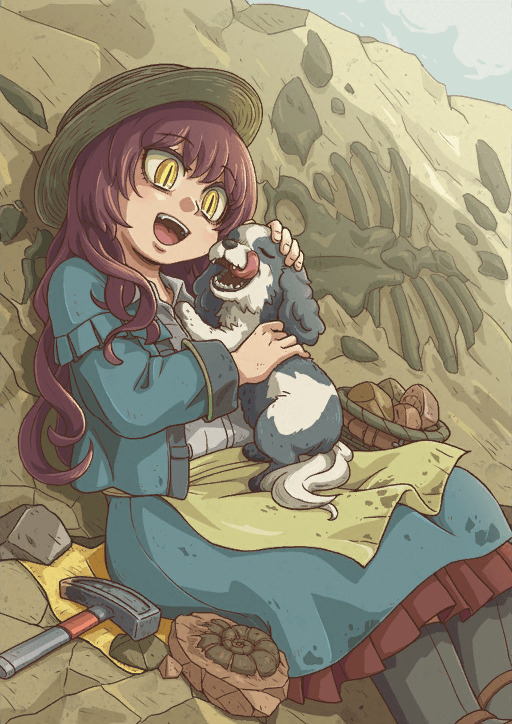
hey y’all! would you like-a talk-a dino? no? too bad, here’s Mary Anning anyway. she’s an arcane trickster rogue to sell literal rocks to people at a profit (and get a cool dog), plus a primeval druid to summon a lightning-spitting plesiosaur. and i thought jurassic park was taking liberties…
check out her build breakdown below the cut, or her character sheet over here!
next up: shouldn’t he be istanbullos by now?
Ancestry & Background
despite having nautiluses for hair, Mary is still a Human, so she gets +1 Dexterity & Intelligence, as well as proficiency in Nature (old nature sure, but still nature) and the Tough feat for an extra 2 HP per level. she also used to be a sickly child before being nursed to health by a literal bolt of lightning yes that’s a thing that happened so she’s definitely being Rewarded by something. that gives her Insight and Persuasion proficiency, as well as the Skilled background for more proficiency in Mason’s Tools, Athletics, and History.
Ability Scores
your Intelligence should be as high as it can go. we don’t actually need it here, but you were the first person to figure out what an Ichthyosaur is (not a dinosaur) and what coprolites are (not something you want to touch bare-handed). second is Wisdom. half the difficulty of paleontology is finding the damn things. the other half is dodging the rockslides, which is why your Dexterity is also pretty high. this does mean your Charisma is lower than I’d like. you’re a fine saleswoman, but you didn’t get a lot of credit for the work you did. this means your Constitution is middling, and your Strength is as low as it gets. thankfully you can just reanimate the fossils now, so carrying them’s a lot easier.
Class Levels
1. Rogue 1: if we want to find fossils, you need to be damn good with a chisel first. also I’m not making the same mistake I made with Galatea, I’m not going to figure out how to have you wield a hammer in one hand and a chisel in the other officially, sorry. on the plus side, no matter how you use that chisel you can still Sneak Attack with it, adding 1d6 to the damage done as long as you have advantage on the attack or another friend next to them. all fossils are restrained (by rock), so you shouldn’t have any issue getting advantage. you also learn Thieves’ Cant, which is really just Cockney. finally, your Expertise in Nature and History will double your proficiency bonus when you make checks about old animals or natural history. suck it, publications!
also as a rogue you get proficiency in Dexterity and Intelligence saves, as well as Deception, Investigation, Perception, and Sleight of Hand, bc god knows you didn’t have enough skills just yet.
2. Rogue 2: second level rogues get a Cunning Action each turn, letting you dash, disengage, or hide as a bonus action. the early paleontologist gets the bone, as the assuredly real saying goes.
3. Rogue 3: we haven’t picked up all your fossil-hunting gear just yet- we still need some explosives, and a dog. thankfully, we can get both of those from being an Arcane Trickster! now you can cast spells using your Intelligence! okay I guess we actually did need that. anyway, your spell list is pretty restrictive, with only one spell that can be freely picked from the wizard spell list. the rest all have to be enchantment or illusion spells.
but before we talk spells, let’s talk Cantrips! Thunderclap will help remove solid rock, while Mold Earth will dig through loose dirt real fast. you also get Mage Hand which comes with its own Legerdemain, and that’s going to be Tray for this build! just have it do the dog shadow puppet thing to really sell the flavor. the original mage hand lasts a minute and is a floating ghost hand/dog that sticks near you, and you can use your action to move it and have it pick up objects, open doors, grab stuff from containers, or pour out liquids. you know, basic dog tricks. the legerdemain makes your dog a little more special, letting it pickpocket people, pick locks, and turn invisible. those are less doglike, but you can do all of those plus the og stuff as a bonus action now too.
as for your spells, Mage Armor will help you not die, Distort Value will help you sell rocks for enough money to live on, and Illusory Script will help you get out of whatever shitty contract super bunyan tried to force on you.
one last thing- you can use Steady Aim to give yourself advantage as a bonus action, so long as you haven’t moved yet and don’t plan on doing so this turn. the rocks are generally stationary, so it should be fine.
okay, okay, the real last thing- your sneak attack deals 2d6 extra damage now. this is what happens when you can afford the good chisels.
4. Rogue 4: fourth level rogues get their first Ability Score Improvement, so improve that Dexterity while you’re here. yes the rocks don’t move much, but you still have to worry about your AC. in the same “not getting hit” vein, you get Color Spray this level. this one’s just pocket sand. blast it in peoples’ faces and they go blind for a round.
5. Rogue 5: fifth level rogues have an Uncanny Dodge. whenever you’d take damage from an attack, you can use your reaction to take half damage instead. ideally you wouldn’t get hit at all, but it’s not like you can afford platemail. speaking of damage though, your sneak attack deals 3d6 damage now.
6. Rogue 6: sixth level rogues get another round of Expertise, so double down on Perception and Persuasion to find and sell fossils.
7. Rogue 7: seventh level rogues learn Evasion, which means every time you have to make a dexterity save you only take half damage on a failure and no damage on a success. your job consisted of going to rockslide mountain during rockslide season but you didn’t die until breast cancer took you out, there’s clearly something going on there.
also you learn Dragon’s Breath. it’s a secret tool that will help us later. for right now, your sneak attack deals 4d6 damage!
8. Druid 1: at level one, druids also learn Spells, which they use their Wisdom to cast. since we’re mixing spellcasters, you’ll have to check the PHB to figure out how many spell slots you have at any one time.
first, cantrips. Shillelagh lets you turn a club into a magical club that uses your wisdom to hit, so I guess if you really want to use a hammer, now you’ll be slightly better at it. you can also use Druidcraft to figure out the weather for today. I don’t know if rockslides count as “weather” exactly, but it doesn’t hurt to try.
as for your spells, druids can prepare spells from their whole list every day, so I highly recommend checking out whatever suits your fancy. the only spell I think is in-character right now though is Faerie Fire. sadly we can’t make it only work for women, but it’ll make it impossible for anyone hit by it to turn invisible, and attacks against them have advantage.
9. Druid 2: second level druids enter a circle, and the Circle of the Primeval was practically made for you! before we get into that we do need to mention your Wild Shape real fast, though you’re not using it if you’re staying in character- I’ll just say for now you could use it twice per short rest. more importantly, you can use those two per rest charges to summon a Primeval Companion instead! with this, you can summon a medium plesiosaurus that you can order around with your bonus action. it can’t swim just yet, but he’s just getting started! (this is where Dragon’s Breath comes back in, now you can have him shooting lightning right out the gate. or yourself, if you want.)
also, as a Keeper of Old, you can add a d4 to your history checks.
(and I will say now that yes, you could use wild shape charges to summon a Wild Companion if you want Tray to be a real dog, but that would mean he’d have an actual HP bar and I’m just not ready to deal with that.)
10. Druid 3: third level druids learn second level spells! Enhance Ability gives you advantage in one kind of ability check of your choice, while Locate Object can help you locate the nearest fossil. it’s kind of like cheating, but fuck it!
11. Druid 4: fourth level druids get a Wild Shape Improvement, so while plesi can’t swim yet, you can. somehow. also your Dexterity goes up again. also also you can cast Guidance now to give yourself or a friend a d4 to their next skill check, for when you really need to sell this next fossil.
12. Druid 5: fifth level druids learn third level spells! Conjure Animals is your go-to for your noble phantasm, letting you summon a bunch of smaller fossils all at one go, but you can also use Elemental Weapon if you want some electrical attacks for yourself too.
13. Druid 6: now that you’re a proper Prehistoric Conduit, you can cast spells as though they came from your plesiosaur. this means you can cast Dragon’s Breath on him without even having to touch him! given that he’s probably in the thick of battle, that’s most likely for the best. also, if he gets caught up in one of your spells, he gets advantage on his save against its damage and evasion for said spell, regardless of what kind of save it is.
14. Druid 7: seventh level druids get fourth level spells, like… actually there isn’t really any I want. maybe Elemental Bane if you can find a non-spell way to deal lightning damage? otherwise just upcast conjure animals.
15. Druid 8: eighth level druids get another WSI, so now you can fly if you want. also you can use your ASI to start improving your Charisma for better sales pitches.
16. Druid 9: ninth level druids get fifth level spells, and while Plessy doesn’t really talk much he’s probably a lot smarter than most dinosaurs, so I still think Awaken is a good pick for him. this’ll make the animal or plant you use it on sentient permanently, and it will be your friend for up to a month. past that point, how it feels about you is up to it.
17. Druid 10: let’s grab Mending real quick before we go into the level, I imagine your clothes probably get torn up pretty often in this line of work. also you now share a Titanic Bond with your living fossil, making it large enough to ride around on and it can finally swim! as a bonus, once per turn you can try and frighten a creature when you hit it with an attack or spell. everyone’s seen jurassic park by this point, they know not to stand near dinosaurs.
18. Druid 11: as we near the end, you can finally grab sixth level spells like Move Earth. for up to two hours after casting, you can reshape dirt, sand, or clay in a 40’ area that can be moved around, with each change taking ten minutes. also worth noting, this doesn’t work on stone or stone structures, so any rock formations might collapse if you use this too much. Make Sure Nothing You Love Is Under the Rocks.
19. Druid 12: use your last ASI to bump up your Charisma again! with a charisma score like that you could even make a 19th century englishman respect… well, literally anyone who isn’t also a 19th century englishman.
20. Druid 13: for our final level you gain access to seventh level spells, but again there aren’t really any I want. sorry to end it on a sour note, but now you can upcast your animal conjuring and lightning breath, so that’s neat!
Pros & Cons
Pros:
druids have access to some powerful aoe spells, and while we only really use Dragon’s Breath in this build, being able to shoot them out of a large creature means you can make those aoes even bigger, for free, and odds are Plesi’s gonna be just fine on top of all that.
as a rogue, you like having people around you. as a druid, you can make people around you. well, dinosaurs. still, everything goes with sneak attack, so you can pretty much guarantee that extra damage whenever you want.
rogues are always great at skill checks, and you take that to a whole new level. as long as you have anything to sell, your party will never have to worry about their budget. also, while we got a lot of skills for buying and selling, most of them are open-ended enough that they can be used for any skill check you want!
Cons:
it takes a while for this build to reach something I’d call a finished state. while it works fine for most of the game, riding around on a plesiosaurus is kind of the dream, and you can’t do that until level 17.
a lot of your spell list is spent on utility spells, and while they aren’t necessarily bad, it’s hard to think of when you’d really want the ability to dig for two hours over say, a fireball. they don’t even break rock, so good luck getting to actual fossils with Mold Earth.
both druid and rogue are pretty greedy classes- they both want you to focus on them as much as possible. because of this, we get neither a big sneak attack bonus nor druid’s busted capstone ability, which is rough. it’s not the end of the world since you’d probably never see any capstone ability used in regular D&D anyway, but still.
36 notes
·
View notes
Text
Wordplay Wednesday: Limb Bones
Let's talk about the various bones in vertebrate limbs. In the arm we start with the scapula and coracoid or shoulder blade.
Many mammal also have a clavicle. This bone is fully developed in primates and bats but absent in swimming mammals and ungulates. Theropods (including birds) have fused clavicles known as a furcula.
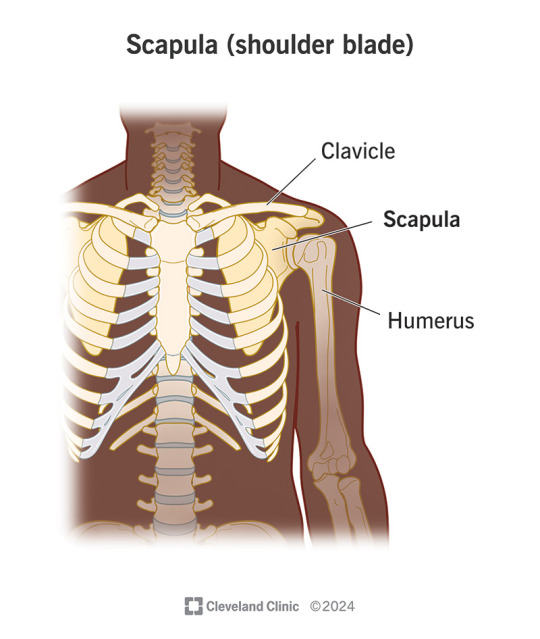

Next comes the humerus, or upper arm bone.
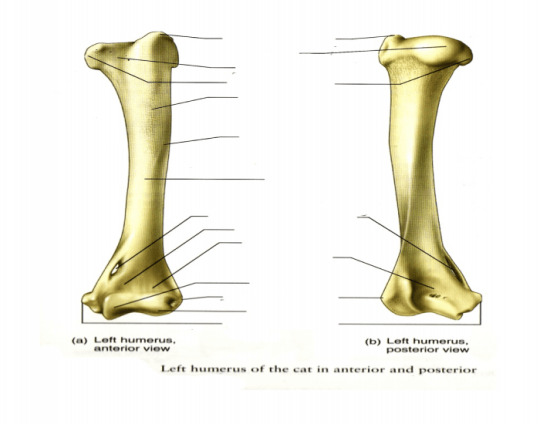
The lower arm is made of to bones: the ulna and the radius.

In mammals, these bones twist over each other allows for pronation of the wrist. (Dinosaurs can't do this so Jurassic Park holds them in a broken position).

Next come the carpals or wrist bones (grey), the metacarpals or hand bones (pink) and the phalanges oringer bones (green). In animals with claws, the claw is termed the ungual.
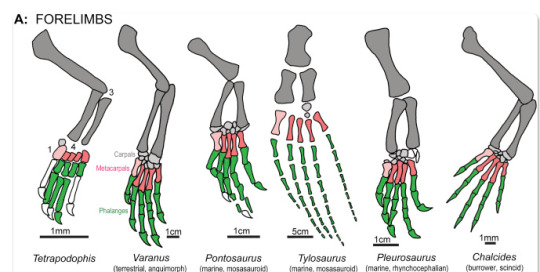
Now we move to the pelvic girdle where we start with the three hip bones. In humans, they are fused into a bowl shape.
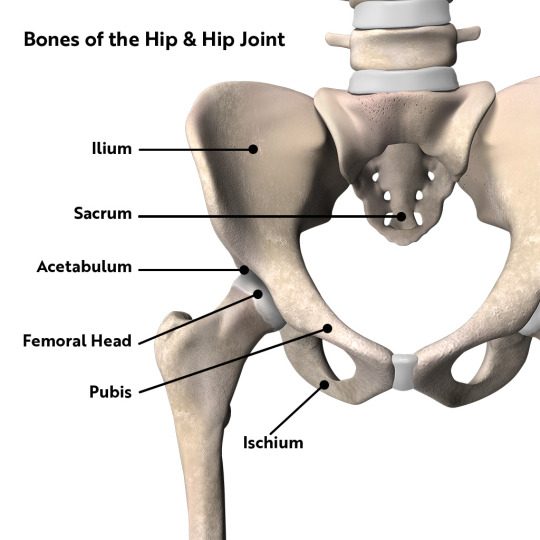
In other animals, like dinosaurs, the three pieces are a little easier to point out.

The three parts are the ilium, ischium and pubis. The hole that forms where they all come together is the acetabulum which can be either closed (like ours) or open (like a dinosaur).
Fitting into the acetabulum is the femur or thigh bone. This is the strongest bone in the body.

Below the femur are the two lower leg bones: the tibia (shin) and fibula.

Then we have the tarsals (ankle bones), metatarsals (foot bones) and more phalanges (toe bones)! Again, if claws are present, the foot ends in unguals.
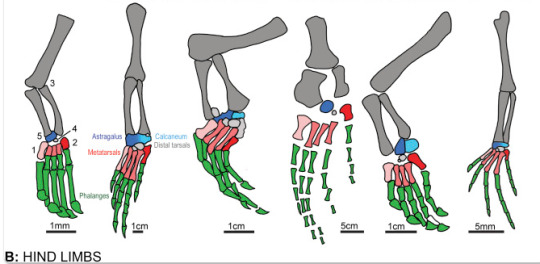
Now you can name all the limb bones (mostly, the carpals and tarsals have their own names but you've got the basics now). Tune in tomorrow to learn more about the discovery of the first bird! Fossilize you later!

#paleontology#fossils#dinosaur#science terminology#science education#comparative anatomy#paleontologist
18 notes
·
View notes
Text
Yandusaurus hongheensis
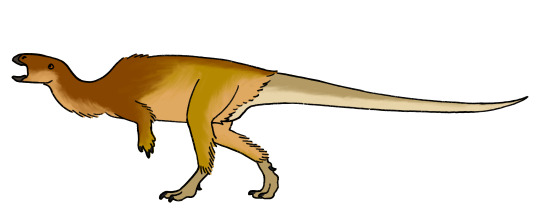
Yandusaurus was a genus of ornithischian dinosaur from the Middle Jurassic. Its type species is Y. hongheensis. The only specimen was found in Jinzidang near the Honghe dam during construction in 1973. The fossil had been accidentally processed partially through the composter but was still intact enough to work with, and it was formally described in 1979.
A second species, Y. multidens, was named in 1983, but this was later reassigned to Agilisaurus in 1992 and then Othnielia (Nanosaurus) in 1996. Eventually, in 2005, it was described as its own genus as Hexinlusaurus multidens.
The fossil consists of the skull, vertebral column, shoulder girdle, frontlimbs and hindlimb, all of which are heavily damaged. The end of the tail, lower jaws, and pelvis were most likely destroyed in the composter. Y. honheensis was bipedal and likely a fast runner with four toes on its hind legs and five on its front legs. It had large eyes and its teeth showed unique patterns of parallel ridges along them.
Original paper: He, X. "A newly discovered ornithopod dinosaur-Yandusaurus from Zigong, China." Contributions to International Exchange of Geology, Part 2 (1979): 116-123.
Wikipedia article: https://en.m.wikipedia.org/wiki/Yandusaurus
#dinosaur#dinosauria#original art#paleontology#yandusaurus#fossil#ornithischia#paleoart#human artist#wikipedia#neornithischia#obscure fossil animals#obscure fossil dinosaurs#obscure fossil tetrapods
88 notes
·
View notes
Text

If you've ever wondered what a living bug fossile might look like, then boy do I have some good news for you!
Raphidioptera, or snakefly in english, might be the oldest insects we know. Fossils from this order of insects can be traced back to the lower jurassic, so about 201 - 174 million years ago. The snakeflies you can see today look extremely close to their ancient relatives, they are living fossils. Knowing ancient insects tho, their relatives were probably a lot bigger, but don't quote me on that.
They are also very friendly, so if you ever see one, just let them roam around on your hand for a while.
5 notes
·
View notes
Photo

Fossil Ammonite ZETOCERAS ZETES | Lower Pliensbachian Jurassic Hinterriss Austria | Genuine Specimen with COA
Own an authentic and scientifically significant ammonite fossil—this beautifully preserved specimen of Zetoceras zetes comes from the Lower Pliensbachian stage of the Early Jurassic period, collected near Hinterriss, Austria. Ammonites like this are extinct marine cephalopods, known for their coiled shells and key role in biostratigraphy.
Fossil Type: Ammonite (Extinct Marine Cephalopod)
Species: Zetoceras zetes
Geological Period: Jurassic (~201 to 174 million years ago)
Geological Stage: Lower Pliensbachian (~190 to 183 million years ago)
Location: Hinterriss, Tyrol, Austria
Scale Rule: Squares/Cube = 1cm (See photo for full sizing)
Specimen: What you see is exactly what you’ll receive—the photographed fossil
Authenticity: All of our fossils are 100% genuine specimens and come with a Certificate of Authenticity
Geological and Paleontological Information
Zetoceras zetes is an extinct genus of ammonites, a group of externally-shelled cephalopods that flourished in the Mesozoic oceans. The Lower Pliensbachian marks an important interval in Early Jurassic marine evolution, and ammonites from this stage are key for regional and global biostratigraphic correlation.
Phylum: Mollusca
Class: Cephalopoda
Subclass: Ammonoidea
Order: Ammonitida
Superfamily: Eoderoceratoidea
Family: Dactylioceratidae
Genus: Zetoceras
Species: zetes
Depositional Environment: Shallow marine shelf with calcareous sedimentation; oxygen-rich waters conducive to ammonite proliferation
Morphological Features: Moderately involute shell with fine ribbing and prominent whorls; the shell’s complex suture lines and preserved surface features reflect typical early Jurassic ammonoid characteristics
Biozone: Associated with the Uptonia jamesoni or Amaltheus margaritatus ammonite zones (depending on stratigraphic context in Austria)
Identifier: Described by Mesozoic paleontologists refining the taxonomy of early Jurassic cephalopods in the Alpine region
Why This Fossil is Special
Zetoceras zetes from Hinterriss is a rare and well-documented ammonite species, offering both aesthetic appeal and scientific value. Its preservation within the classic Lower Jurassic deposits of the Northern Calcareous Alps makes it an ideal collector’s piece or teaching specimen.
Why Buy From Us?
100% genuine fossil with Certificate of Authenticity
Specimen shown in the listing photos is the one you’ll receive
Ethically sourced and scientifically accurate descriptions
Excellent for collectors, educators, or as a unique display item
Add a stunning piece of Mesozoic marine life to your collection with this authentic Zetoceras zetes ammonite fossil from the Lower Jurassic Pliensbachian stage of Hinterriss, Austria—a coiled and ribbed legacy from the ancient seas over 185 million years ago.
#Zetoceras zetes#fossil ammonite#Jurassic ammonite#ammonite fossil Austria#Pliensbachian ammonite#Hinterriss fossil#ammonite shell#Lower Jurassic fossil#certified ammonite fossil#genuine ammonite#ammonite with certificate#fossil marine invertebrate#natural history fossil#ammonite collection#extinct cephalopod#ammonite display specimen
0 notes
Text
Round 3 - Chondrichthyes - Chimaeriformes




(Sources - 1, 2, 3, 4)
Our last order in Chondrichthyes is Chimaeriformes, commonly known as “Chimaeras”, and informally known as “ghost sharks”, “spookfish”, “rabbitfish”, or “rat fish” (not to be confused with the Actinopterygiian “rattails”.) Historically a much more diverse and abundant group, they now only comprise the living families Callorhinchidae (“plough-nosed chimaeras” or “elephantfish”), Chimaeridae (“short-nosed chimaeras”), and Rhinochimaeridae (“long-nosed chimaeras”).
Chimaeras are soft-bodied, with bulky heads and long, tapered tails. Their pectoral fins are large enough to generate lift at a relaxed forward momentum, similar to a kite, giving the chimaera the appearance of "flying" through the water. Their gill arches are condensed into a pouch-like bundle covered by an operculum with a single gill-opening in front of the pectoral fins, similar in appearance to Actinopterygiians. They lack spiracles. There are two dorsal fins: a large triangular first dorsal fin and a low rectangular or depressed second dorsal fin. For defense, some chimaeras have a venomous spine on the front edge of the dorsal fin. In many species, the bulbous snout is modified into an elongated sensory organ, capable of electroreception to find prey. Instead of many sharp, consistently-replaced teeth, chimaeras have just six large, permanent tooth-plates, which grow continuously throughout their entire life. These tooth-plates are arranged in three pairs, with one pair at the tip of the lower jaws and two pairs along the upper jaws. They together form a protruding, beak-like crushing and grinding mechanism, comparable to the incisor teeth of rodents and lagomorphs. Most living species are native to the deep sea, with some species inhabiting depths exceeding 2,000 m (6,600 ft) deep, though the few exceptions include the shallower-dwelling plough-nosed chimaeras (genus Callorhinchus) (image 2), the Rabbit Fish (Chimaera monstrosa), and the Spotted Ratfish (Hydrolagus colliei) (image 3).
Chimaeras have separate anal and urogenital openings, rather than a single cloaca. Like sharks and rays, male chimaeras utilize claspers for internal fertilization of females, but unlike sharks and rays, also have retractable sexual appendages known as tentacula to assist in mating. The frontal tentaculum, a bulbous rod which extends out of the forehead, is used to clutch the females' pectoral fins during mating. The prepelvic tentacula are serrated hooked plates normally hidden in pouches in front of the pelvic fins, and they anchor the male to the female. Their claspers are fused together by a cartilaginous sheathe before splitting into a pair of flattened lobes at their tip. Females lay their eggs within spindle-shaped, leathery egg cases which they deposit on the sea floor.
As the most ancient of the Chondrichthyans, Chimaeriformes are truly deserving of the moniker “living fossil”. They have been around since the Early Carboniferous, with the earliest known fossil species being Protochimaera, and split off from the sharks and rays during the Devonian. Modern chimaeras are known from the Early Jurassic, but fossil egg cases from the Late Triassic resembling those of rhinochimaerids and callorhinchids indicate that they had a global distribution earlier than this. Modern chimaeras reached their highest ecological diversity during the Middle Cretaceous. Recent studies indicate that chimaeras were likely a shallow-water group for most of their existence, and only fled to deeper waters in the aftermath of the K-Pg extinction event, adapting to the deep sea to survive.

Propaganda under the cut:
Some chimaera venom can cause pain, necrosis, hallucinations, and localized paralysis in humans. It is not deadly to humans, but has been known to kill Harbor Seals that injested Spotted Ratfish (Hydrolagus colliei).
Spotted Ratfish (Hydrolagus colliei) have large, emerald green eyes, which are able to reflect light, similar to the eyes of a cat.
Chimaera teeth are unique among vertebrates, due to their mode of mineralization. Most of each plate is formed by relatively soft osteodentin, but the active edges are supplemented by a unique hypermineralized tissue called pleromin, rather than enamel. Pleromin is an extremely hard enamel-like tissue, arranged into sheets or beaded rods, but it is deposited by mesenchyme-derived cells similar to those that form bone. In addition, pleromin's hardness is due to the mineral whitlockite, which crystalizes within the teeth as the animal matures.
The Australian Ghostshark (Callorhinchus milii) is very popular with fish-and-chips restaurants in New Zealand and is sold as 'flake' or 'whitefish' in Australia.
The Striped Rabbitfish (Hydrolagus matallanasi) can see in total darkness and sense electromagnetic radiation (outside of the visible spectrum) emitted by other marine creatures due to exposed nerves on the sides of its body.
Some species of chimaerids are known to segregate by sex, with females congregating at greater depths than males.
Despite their deep sea habitat and reclusive nature, some chimaera species are still threatened by bycatch due to deep sea trawling for demersal shrimp and prawns. Even when released, most chimaeras do not survive the process of being quickly pulled up from the pressurized deep sea to shallower water.
#description a bit longer than usual because they’re so unlike all the other members of the class#animal polls#round 3#chondrichthyes
102 notes
·
View notes
Text
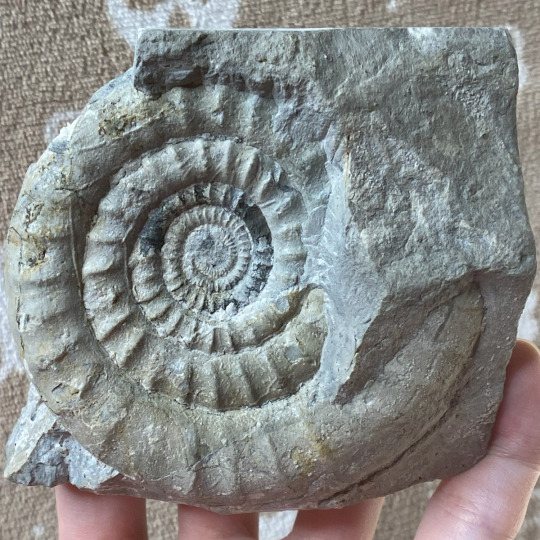
An ammonite fossil of an Echioceras raricostatum from Zakarpattia Oblast (Transcarpathia), Ukraine. These echioceratid ammonites are found in Lower Jurassic aged deposits in various parts of the world.
#ammonite#cephalopod#fossils#paleontology#palaeontology#paleo#palaeo#echioceras#echioceratidae#jurassic#mesozoic#prehistoric#science#paleoblr#エキオセラス#エキオセラス科#アンモナイト#化石#古生物学
14 notes
·
View notes
Text
Kiyacursor longipes Averianov et al., 2024 (new genus and species)

(Type specimen of Kiyacursor longipes, from Averianov et al., 2024)
Meaning of name: Kiyacursor = Kiya River runner [in Latin]; longipes = long foot [in Latin]
Age: Early Cretaceous (Aptian)
Where found: Ilek Formation, Kemerovo Oblast, Russia
How much is known: Partial skeleton of one individual including several vertebrae and limb bones. A partial neck vertebra found at the same site may belong to the same individual.
Notes: Kiyacursor was a ceratosaurian theropod. It resembles the Late Jurassic ceratosaurs Elaphrosaurus of Tanzania and Limusaurus of China in having relatively elongate lower legs and feet, suggesting that it was well adapted for fast running. The type specimen of Kiyacursor is estimated to have been 2.5 m long in total body length, but it probably had not finished growing when it died.
Although ceratosaurs are known from the Late Cretaceous of Europe and especially the Southern Hemisphere, Kiyacursor is the youngest known ceratosaur from Asia. In addition to Kiyacursor, the Ilek Formation has produced fossils of various other animals that are more characteristic of Jurassic ecosystems, including certain types of proto-salamanders, proto-crocodylians, and proto-mammals. This may indicate that what is now Western Siberia acted as a "lost world" for some Jurassic animal groups during the Early Cretaceous.
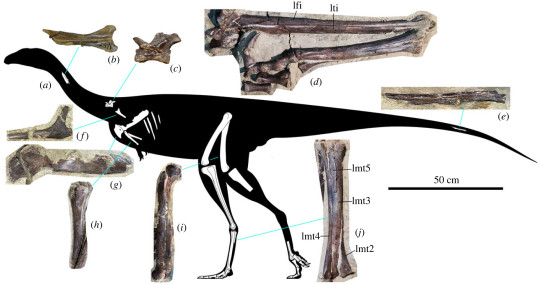
(Select bones and schematic skeletal of Kiyacursor longipes [scale bar refers only to the skeletal and not to the photographs of bones], from Averianov et al., 2024)
Reference: Averianov, A.O., P.P. Skutschas, A.A. Atuchin, D.A. Slobodin, O.A. Feofanova, and O.N. Vladimirova. 2024. The last ceratosaur of Asia: a new noasaurid from the Early Cretaceous Great Siberian Refugium. Proceedings of the Royal Society B 291: 20240537. doi: 10.1098/rspb.2024.0537
77 notes
·
View notes
Text
Introduction to dinosaurs and bones!
Vocabulary:
Paleontology: the study of all prehistoric life.
Fossil: any preserved evidence left behind by a prehistoric organism.
Adaptations: traits that have been evolved because they serve specific purposes.
Content:
Dinosaurs came in all sorts of shapes and sizes! They weren’t all huge, some of them were probably less than a meter long when fully grown (like the Microraptor, or the Fruitadens)!! And, contrary to popular media (The Jurassic Park series), the Velociraptor was actually about the size of a dog, or a turkey; give or take.
A good example of an adaptation would be bones! Bones help all animals survive by serving four major functions:
They passively resist the force of gravity and maintain an animal's form!
Bones provide a rigid framework for muscle attachment!
As much as they provide protection internally, they could easily be fantastic weapons (think horns, and other things like that).
They act as HUGE mineral reserves!
The Skulls and Jaws!
Vocabulary:
Vertebrates: animals with two kinds of special skeletal adaptations: the skull and vertebrae.
Vertebrae: structures primarily made out of bone and/or cartilage that surround a portion of the spinal nerve cord.
Vertebral column: a series of interlocking vertebrae.
Brain case: a hollow chamber formed by multiple skull bones that houses the brain!
Fenestrae: Latin for “windows.”
Content:
Skulls are not singular bones! The skull is made up of many bones that are tightly locked together. The skull itself can give greater insights about a dinosaur's life than really any other bone(s)!
The upper and lower jaws may contain teeth and/or include a beak, and these things are critical for paleontologists to be able to interpret what the mighty beast(s) were adapted to eat!
The rear portion of the skull includes the brain case. There are many small openings in the brain case that allow nerves to connect to the brain. Which is very important, and is still a present adaptation today. The size and shape of the brain case can indicate the size and/or shape of the brain it housed, and, therefore, provides us with clues to the dinosaur's mental capabilities!
Dinosaur skulls also have multiple pairs of large openings! These included the:
Nares: the openings for the nostrils.
Orbits: the openings for the eyes.
In some modern animals, like turtles, there are no other skull openings. This is another example of animals evolving and adapting to their environments! Dinosaurs had a few more openings in their skulls, which were called:
Fenestrae!
Behind each orbit there were two fenestrae:
On the lateral sides of the skull, there were the two laterotemporal fenestrae.
On the top of the skull, there were the two supratemporal fenestrae.
Both pairs were present in the skull to make room for large jaw muscles!
Between each orbit and naris, dinosaurs also had a third pair of fenestrae! These were called the antorbital fenestrae. Though, the exact function of this is unclear; I like to think that in some dinosaurs it helped warm the air that they breathed, and in others it simply made the skull a little bit lighter.
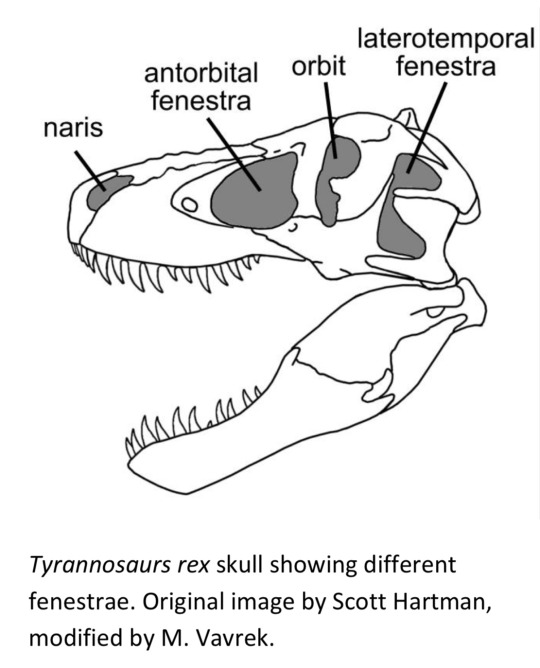
#studying dinosaurs#dinosaur nuggets#dinosaurs#study fun things#studyblr community#studyspo#studyblr#study notes#my notes#notes#study blog#study motivation#study inspiration#studying
12 notes
·
View notes